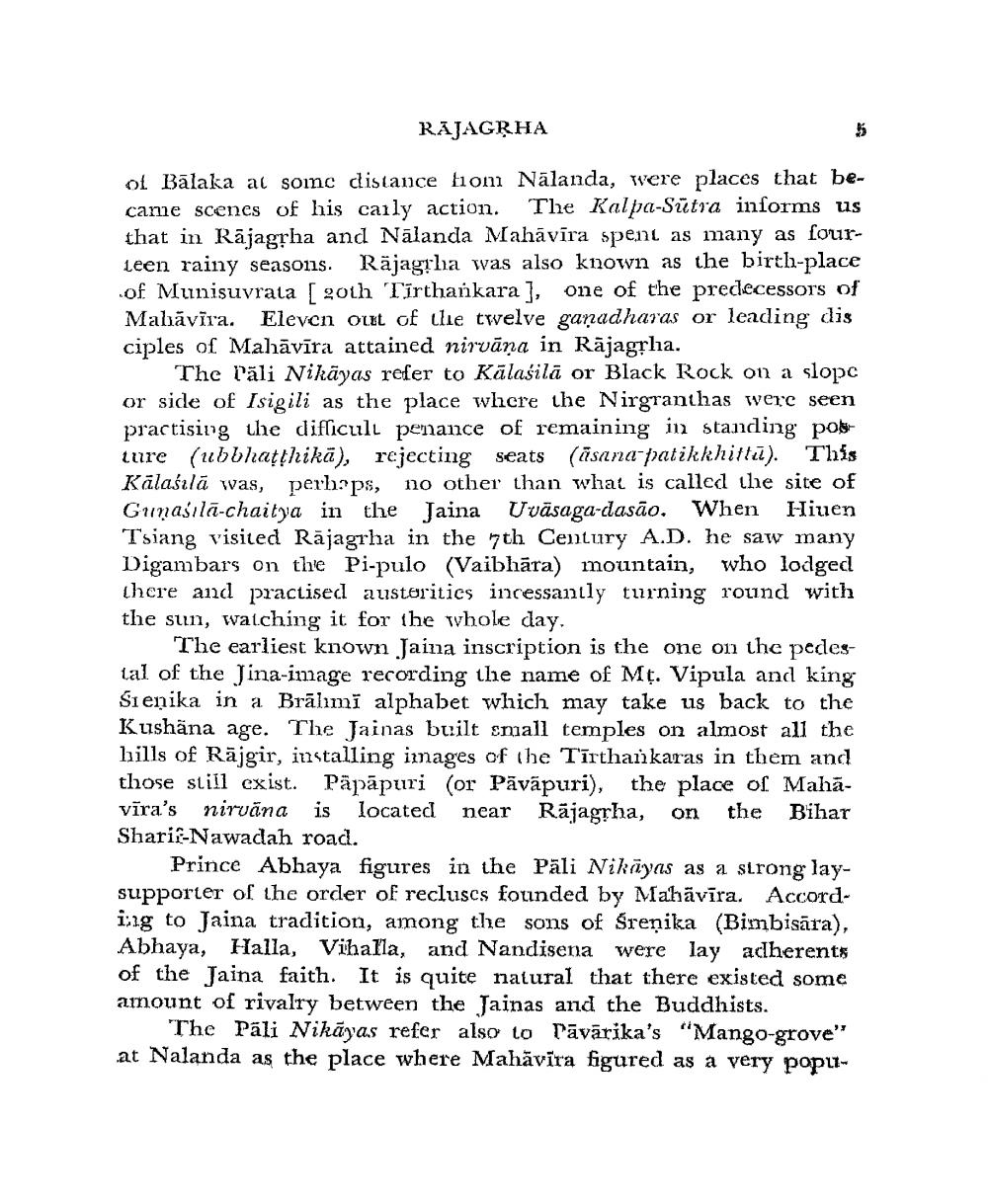________________
RAJAGRHA
of Bālaka at soinc distance from Nalanda, were places that became scenes of his carly action. The Kalpa-Sūtra informs us that in Rājagrha and Nalanda Mahāvīra spent as many as fourleen rainy seasons. Räjagtha was also known as the birth-place of Munisuvrata [ 20th Tīrthankara ), one of the predecessors of Malāvira. Eleven out of the twelve gañadharas or leading dis ciples of Mahāvīra attained nirvāṇa in Rājagrla.
The Päli Nikāyas refer to Kālasilā or Black Rock on a slopc or side of Isigili as the place where the Nirgranthas were seen practising the difficult penance of remaining in standing polo ture (ubbhatthika), rejecting seats (asana patikkhitta). This Kālaśılā was, perhaps, no other than what is called the site of Gunasılā-chaitya in the Jaina Uväsaga-dasão. When Hiuen Tsiang visited Rājagrha in the 7th Century A.D. he saw many Digambars on the Pi-pulo (Vaibhāra) mountain, who lodged There and practised austerities incessantly turning round with the sun, watching it for the whole day.
The earliest known Jaina inscription is the one on the pedestal of the Jina-image recording the name of Mţ. Vipula and king Sienika in a Brālimī alphabet which may take us back to the Kushäna age. The Jainas built small temples on almost all the hills of Rājgir, installing images of the Tīrthankaras in them and those still exist. Päpāpuri (or Pāvāpuri), the place of Mahāvīra's nirvana is located near Rājagrha, on the Bihar Sharia-Nawadah road.
Prince Abhaya figures in the Päli Nikiyas as a strong laysupporter of the order of recluscs founded by Mahāvīra. According to Jaina tradition, among the sons of Sreņika (Bimbisāra), Abhaya, Halla, Vihalla, and Nandisena were lay adherents of the Jaina faith. It is quite natural that there existed some amount of rivalry between the Jainas and the Buddhists.
The Pali Nikāgas refer also to Pāvārika's "Mango-grove" at Nalanda as the place where Mahāvīra figured as a very poput




